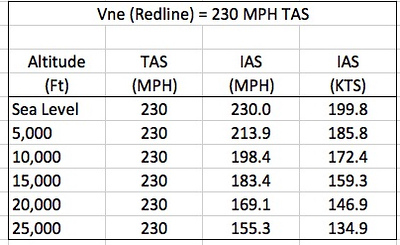We have updated the RV-14/14A V-Speeds specification document and posted the new version to our website in the RV-14 Service Information area.
This version (Rev 3) adds best-glide data. It also modifies the specification for Never-Exceed speeds to include both indicated and true airspeed values. Owners with modern EFIS systems should configure their EFIS to display both values. An explanation of the reason for this is provided in the document.
This version (Rev 3) adds best-glide data. It also modifies the specification for Never-Exceed speeds to include both indicated and true airspeed values. Owners with modern EFIS systems should configure their EFIS to display both values. An explanation of the reason for this is provided in the document.









